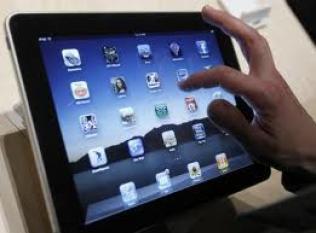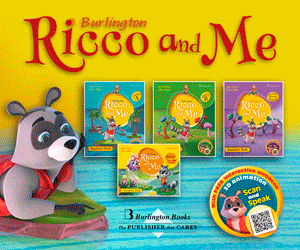The micro-computer revolution of the 80's radically improved how teachers and schools carry on the business of learning. We now have iPads in classrooms that will not only improve it, but it has the potential to change the business of learning in schools. The question is, "Are teachers ready to adjust their teaching for this new learning revolution?"
I have just become principal of a school that will be participating in this revolution this year. The ninth- and tenth-graders will be all receiving iPads. Aside from the obvious technical challenges, the real challenge I see will be to assure that this sizable investment will take student learning to the next level. Computers allowed students to word process rather than type, to do media presentations instead of show and tell, to find information on the Internet instead of encyclopedias, and to graph data electronically instead of with magic markers. Teachers depend on computers to do the same, as well as using interactive whiteboards to increase the effectiveness of presentations. The iPad can do all these things, along with many other capabilities, and it is super portable, and that might make all the difference. So how will it change learning?
In the Classroom
Let's imagine a math class full of geometry students with iPads. The teacher says, "Ok class take out your iPads and find the best geometric form for a deep sea submarine." What can the students do? The students can find out the necessary information about how deep is deep, about what kind of pressures exist there, and find out the math necessary to determine the strongest geometric form. They can also collaborate with their peers by walking across the room and showing them their results on the iPad, they can ask the teacher questions through the network, and the students can find, or better yet, create pressure simulations to predict the results. They can check out lectures from experts and professors at iTunes U, and they can share and save what they learned with other students on the network. They can graph their results, sketch a possible example of what a submarine of this form might look like, and then do a Prezi presentation about what they learned.
The teacher might be tempted to direct the students to use a geometry sketch program, a geometry vocabulary program, a self-paced geometry lesson, or an online lecture, but while those are good things you might do with a computer, they restrict and funnel student thinking, rather than expand it. The teacher could have 30 students, all doing the same thing at the same time on their iPads, but this doesn't make sense either. The students have a powerful information tool in their hands, and as The Common Core State Standards for Mathematics require students to think critically and problem solve, there is no way that a teacher can get students to become independent learners in sync. Sure there may be some useful apps that help the student gain the skills, knowledge or insight into the subject, and a teacher might want the class to do it together, but focusing solely on the apps, or student control, limits the true potential of the iPad -- "a tool to think with."
Another Example
A science teacher can provide similar learning opportunities. During the course of a true experiment, the students not only can dictate or type the descriptions of the phases of the experiment as it progresses, but they can take still photographs and movies to document the progress. So what is the teacher doing while the students are performing the experiment? The teacher is roving with his iPad, documenting student performance, taking notes, pictures, and movies. (Movies of students? There should be signed agreements with the teachers, students, and their parents that the still or video footage of the students will only be used to help the students learn, and help the teacher improve the creation of learning environments -- and not to be published on youtube or social networking.)
Getting Teachers Onboard
One of the biggest questions teachers have about giving students iPads is, "How do you keep the students from playing games?" To answer this question, certainly the aforementioned agreements should include acceptable use of the devices, but in reality, the answer lies mainly with the teacher. If students are given engaging, open-ended problems to solve, they won't want or need to play games on their iPads during class time. Even though you might not want students to play them during class, you have to admit that some of the games really are beneficial in helping students not only learn to use the technology, but also are useful in developing analytical and critical thinking skills (which are different, by the way).
It is time for the role of the teacher to change. Students with iPads have just as much access to knowledge as the teacher, and maybe more. Their perspectives do not have to be limited by a myopic and narrow textbook viewpoint, or a rigid standardized test framework. Teachers no longer need to be the sole presenters of content. This is truly a paradigm shift in how teachers interact with students who are learning. I envision my teachers becoming experts who are inspiring good questions from students, teachers who are masterful at channeling student interests in productive ways, and teachers who constantly assess student learning and providing critical feedback.
The lesson planning questions I hope my teachers will learn to ask will change from "How can I teach this content?" to, "How can I get students to learn this content?" I hope they will answer this question with open-ended learning activities rather than saying, "I have an app for that."
Ben Johnson served as an administrator in large and small schools, and at a charter school. He was the assistant superintendent of the Natalia Independent School District where he helped bring about major improvements in student learning.
Originally published (9/7/12) © Edutopia.org; The George Lucas Educational Foundation
Τελευταία νέα
- Το 1ο Burlington Community Festival - Μια μέρα έμπνευσης, δημιουργικότητας και χαράς!
- EUROPALSO - Εγκύκλιος 27/06/2025: Απογραφή ΚΞΓ – Νέο Πρόγραμμα ΔΥΠΑ για εργαζόμενους και ανέργους – Εξετάσεις Ενηλίκων – WaterFun WaterPark – Βεβαιώσεις Σπουδών Society – Νέες Παροχές για ΚΞΓ ESB – Απενεργοποίηση κωδικών E-Europalso – Υποχρεώσεις Ιουλίου-Αυγούστου 2025
- EUROPALSO - ΦΟΡΟΛΟΓΙΚΕΣ ΥΠΟΧΡΕΩΣΕΙΣ ΙΟΥΛΙΟΣ & ΑΥΓΟΥΣΤΟΣ 2025
- EUROPALSO - Νέο Πρόγραμμα ΔΥΠΑ – Με επιδότηση €750
- EUROPALSO: Προσωπικός Αριθμός – Τι Είναι – Πως Εκδίδεται
- EUROPALSO - φορολογικές υποχρεώσεις ιούνιος 2025
- EUROPALSO: Απογραφή υφιστάμενων αδειών ΚΞΓ <75 σε πληροφοριακό σύστημα OpenBusiness έως 1/12/2025
- EUROPALSO Εγκύκλιος 13/06/2025: Απογραφή ΚΞΓ σε OpenBusiness – WaterFun WaterPark – Βεβαιώσεις σπουδών για ΚΞΓ Society – ESB Online Exams for Adults – Νέες Παροχές για ΚΞΓ ESB – Advisory Offices – Υποχρεώσεις Ιουνίου 2025
- Δωρεάν Webinar: Partners in...Creativity! Transforming EFL through Human - AI Collaboration
- 1st Burlington Community Festival: ΔΩΡΕΑΝ για εκπαιδευτικούς και μαθητές 10/5 - Ίδρυμα Σταύρος Νιάρχος




